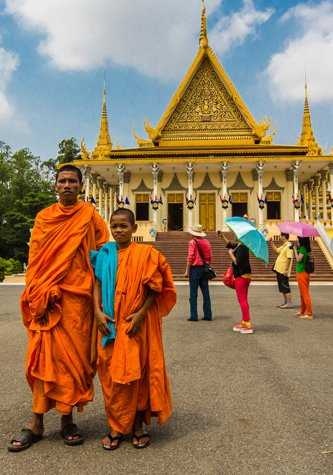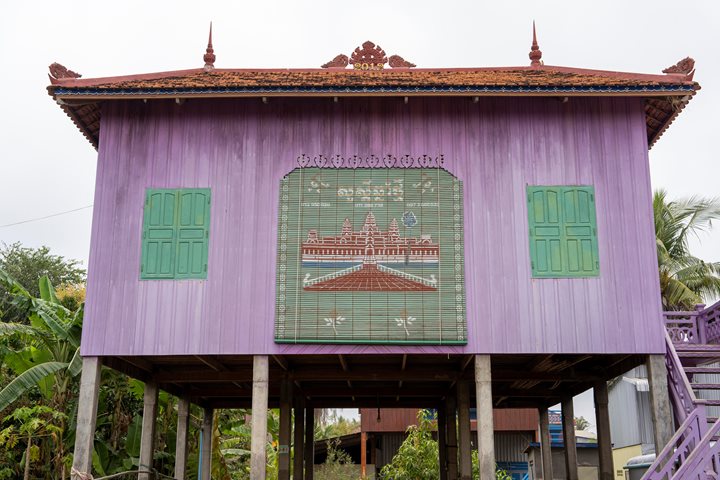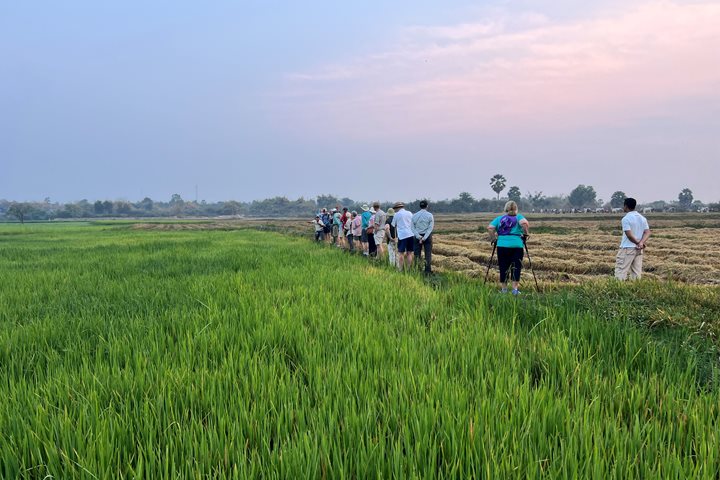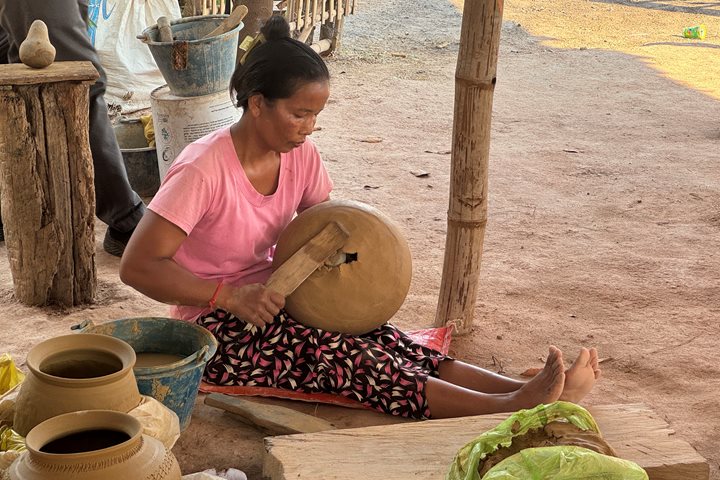We began our discovery of Phnom Penh by riding cyclos through the former French administrative compound. Phnom Penh is certainly one of the last cities in South East Asia where such a cyclo ride is possible, in fact, as could be noticed yesterday, Phnom Penh is a town of enduring exceptions: normally illegal street fruit selling, street barbers, night time soups seasoned with various substances...
The ride was followed by a visit to the National Museum where we admired a set of Khmer art masterpieces, just to remind us that there is a truly remarkable Khmer contribution to the art world.
As there was a ceremony to pay tribute to the current king’s great grandmother, the Royal palace – which should have been closed – opened its doors miraculously for us. This was an opportunity for our guides to display their deep knowledge about the Khmer monarchy and to offer us an appreciable account of the royal palace various intrigues: a prerequisite introduction to Cambodian high spheres of power.
A very nice lunch combining several interesting approaches to Cambodian traditional flavors was followed by the hardest part of the program: the visit of Tuol Sleng jail and the sadly famous Killing fields.
A number of us opted to discover historical Phnom Penh by Tuk Tuk instead.
Whether S 21 and The Killing fields are to be seen is one question that can’t be easily answered. This death machine under a constant blue sky and in a luxuriant environment is here to remind us that almost 2,000,000 Cambodian lost their lives in atrocious conditions in this 3 year, 8 month and 20 days regime.
For a number of us, S 21 was already too much and instead of going to the Killing fields, a visit of the NGO Tabitha was proposed. After S 21, this was most welcome as Tabitha is the good example of a NGO which does serious work in Cambodia.









